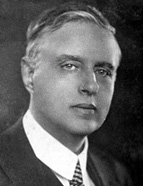

Alfredo d'Escragnolle Taunay guided his son, Affonso d'Escragnolle Taunay, towards a humanistic education at the D. Pedro II School and directed his professional training towards civil engineering at the Polytechnic School of Rio de Janeiro. Affonso Taunay graduated in 1900, and the previous year, after the death of his father, he went to work as an assistant professor of analytical chemistry and industrial chemistry in the industrial engineers course at the Polytechnic School of São Paulo. Two years later, he was promoted; in 1904, he became a substitute professor, and in 1911, he was appointed full professor. His new life in São Paulo also resulted in his marriage in 1907 to Sara de Souza Queiroz, a member of one of São Paulo's traditional families. Alongside university teaching, Taunay also devoted himself to secondary education teaching. In 1902, he came into contact with the plans of D. Miguel Kruse, director of the Monastery of São Bento, to build a gymnasium next to the monastery. The building was inaugurated the following year, and Taunay took over the Physics, Chemistry, Universal History and Brazilian History classes at the institution. Still linked to the Benedictines, in 1911, he inaugurated the Universal History course at the Faculdade de Filosofia e Letras de São Paulo [Faculty of Philosophy and Letters of São Paulo]. There, at the Monastery of São Bento in São Paulo, the young engineer officially began his career as a historian by vocation.
His career has been marked by the coexistence of his training and vocational areas. In 1909, at the age of 33, he published his first work at the Polytechnic School: Léxico de termos técnicos e científicos [Lexicon of technical and scientific terms]. The following year, under the pseudonym Sebastião Corte Real, he published his first history book, the historical novel Crônica do tempo dos Filipes [Chronicle of the Filipes' Era] . The story begins in Lisbon on 3 May 1631, the night before D. Antonio de Oquendo's squadron set sail for Brazil, and unfolds against the backdrop of colonial Bahia during the battle against the Dutch in the 17th century. This battle is permeated by the romance between Leonor de Ávila and Jorge de Lorena. She, the protagonist of the story, is a reference point for most men whose descriptions and narratives about her and her travels through Europe bring forth mismatched versions, intertwined with mysteries involving the coexistence of this woman of undefined maternal origin, orphaned as a child, with gypsies, Jews and Moors from Granada, as well as Lutheran and Calvinist heretics. Jorge de Lorena, a Brazilian born in Rio de Janeiro, was handed over by his father to a relative, the commander of a royal galleon, and sent to Portugal at the age of twelve. After fifteen years of sailing and fighting, he returns to his homeland as commander to fight the invaders and find his great love. In 1911, this work was assessed by the membership committees of both the Instituto Histórico e Geográfico Brasileiro (IHGB) and the Instituto Histórico e Geográfico de São Paulo [São Paulo Historic and Geographic Institute] (IHGSP), granting him admission to these significant historiographical institutions of the period.
This work is financed by national funds through FCT - Foundation for Science and Technology, I.P, in the scope of the projects UIDB/04311/2020 and UIDP/04311/2020.
